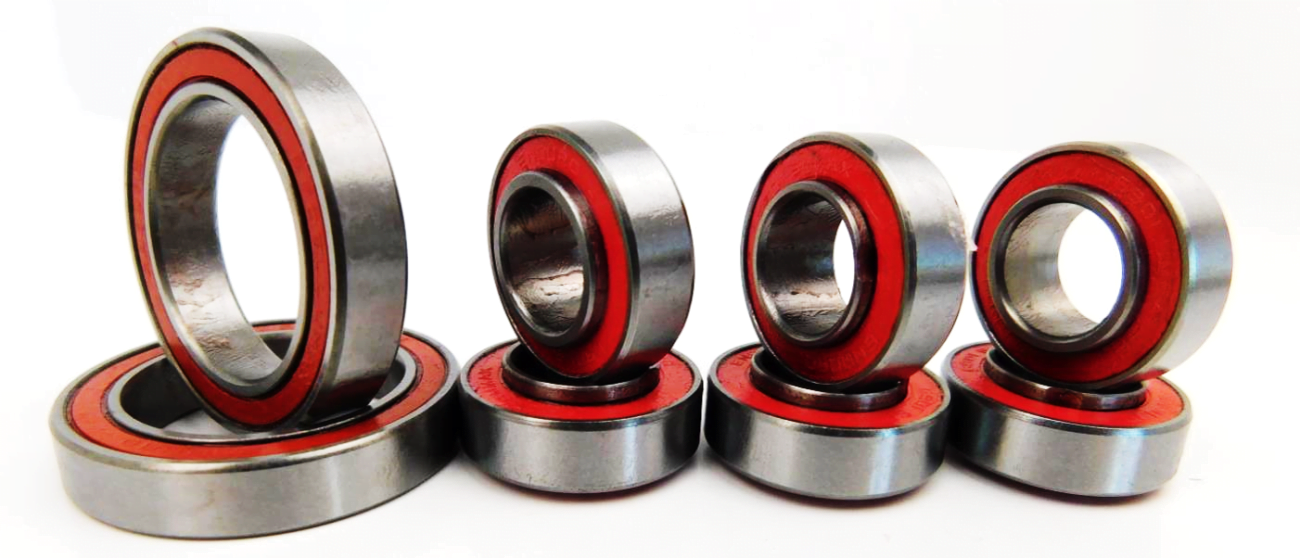What is a bearing?
A bearing is used to reduce friction between two surfaces. You can find bearings in the front or rear hub in your wheels, inside the bottom bracket where the axle is connected to the cranks and in the frame where your headset sits. All these are applicable to either mountain bikes or road bikes.
There are different types of bearings such as cartridge bearings, loose ball bearings, roller bearings and needle bearings:
Cartridge bearing: These are the most common today and this is a bearing that has a cup, cone, retainer and balls sealed in the retainer by either rubber or metal seals.
Loose ball bearing: A ball bearing that uses loose balls to sustain the separation between the two races, typically in Shimano hubs.
Roller bearing: A roller is used to maintain the separation between the races.
Needle bearing: This is a small bearing where small rollers are used to reduce friction.
In this blog post, we will be going through step by step on how to measure a (cartridge) bearing.
Cartridge Bearing
Cartridge bearings have become more popular over recent years as they have many uses with hubs, frames and bottom brackets.
These bearings have an inner and outer race, a retainer which holds the balls and two seals that preserve the grease and keep the elements out. When the cartridge bearing wears out it can be removed entirely to be serviced or replaced.
The ABEC scale is used to test the tolerance of radial ball bearings, which includes measuring individual components, assembled components and high-speed noise testing. This does not measure the precision or quality of the bearing.
How to Measure your Bearing
Ideally, you should use a vernier calliper to measure your bearing due to some bearings having sizes to a decimal place but you can use a good quality rule to check the size.
To identify a bearing you will need three sizes, the outside size, the inside bore and also the thickness of the bearing. Where a bearing has an extended race you will need two sizes for the thickness as well, the outside thickness and the thickness of the extended race including the bearing.
Insert the outer anvil of the calliper into the bore and open up the calliper until the bearing and calliper are a good fit for one another. You will now be able to read the value on the calliper (or ruler).
Measuring the outside diameter of a bearing, you must place the calliper jaws around the bearing and follow by closing it until it is a good fit (not tight). You can then proceed to read the value from the calliper.
Some bearings are also made from a different material. Some races are stainless steel, some have ceramic balls and some have open faces to allow fresh grease to be purged into them on frames where a grease port is fitted. These codes can be identified on the seals usually with identifications such as 2 RS meaning 2 Rubber Seals, BO for a Black Oxide finish and SS for Stainless Steel.
You can shop BETD cartridge bearings here: http://mountainbikecomponents.co.uk/bearings/

